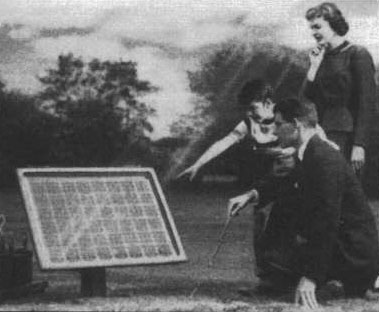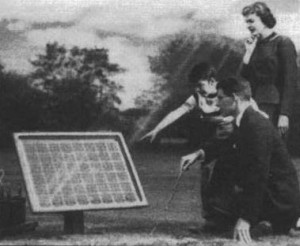Solar power actually dates back over 2,500 years ago. While nowhere as complex as systems today, the Romans used the sun as a natural heat source to the point where they had to enact laws regarding sun rights.
Commercially, solar power made its debut in the late 1800’s. After black boxes started dotting the rooftops of Baltimore, Charles Kemp patented the first solar water heating system. The original systems were basic: the back boxes held water that were heated throughout the day. Kemp combined this style with the scientific principle of a hot box and the Climax was born.

Known as the simple batch system, the Climax cost $25 and would save homeowners around $9 a year. Sales to wealthier Marylanders supported the business originally, but Kemp would later move to the sun-rich grounds of California. By 1900, the Kemp had sold over 1,600 systems.
By 1909, William Bailey transformed the solar heating system, fixing one of the major flaws of the Climax. Since Kemp’s system was entirely housed outside, it meant hot water was only possible during sunlight. The water would cool off as soon as the sun sank below the horizon.
Called the Day and Night, William Bailey invented and patented a thermosyphon system, which kept the heating component outside to reach the sun, but stored the heated water inside so it would retain heat. Bailey also targeted sunny California to sell is system, and soon put Kemp out of business. The Day and Night sold over 4000 units from 1909 through 1918.
As production of the solar thermosyphon system prospered during the 1920’s, economics soon made the solar heat irrelevant. With the discovery of large amounts of natural gas in California, the cost to heat water plummeted and solar systems could no longer compete for business. Bailey did invent a gas version of the Day and Night that flourished in Florida, but the mass production of electricity made the new system obsolete as well.
Today, the tides have changed. While solar is still requires an upfront investment, new technology, financial incentives, and the increasing cost of oil make solar once again a financially viable option (see how much you can save with our Solar Savings Calculator).
Source: solareworld

 Follow
Follow